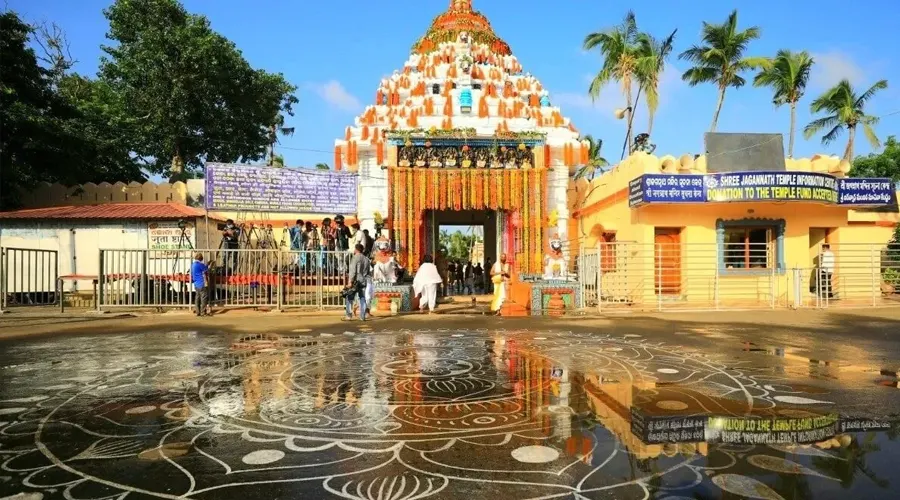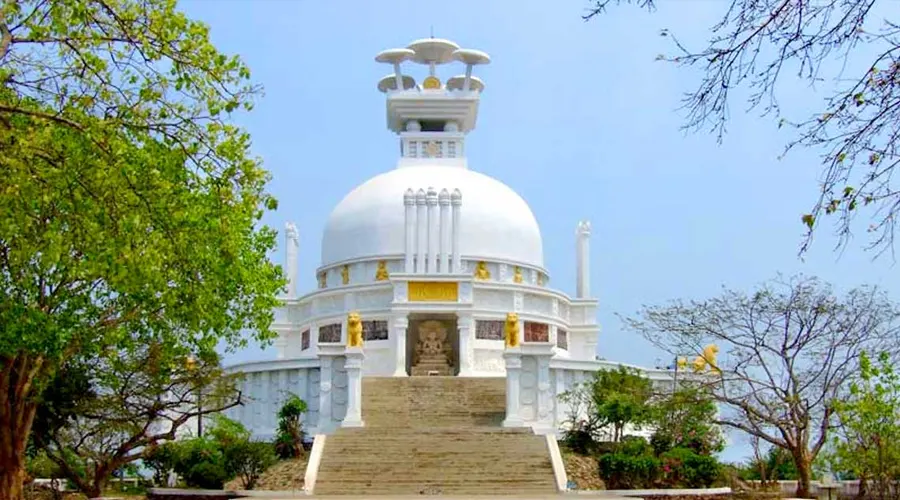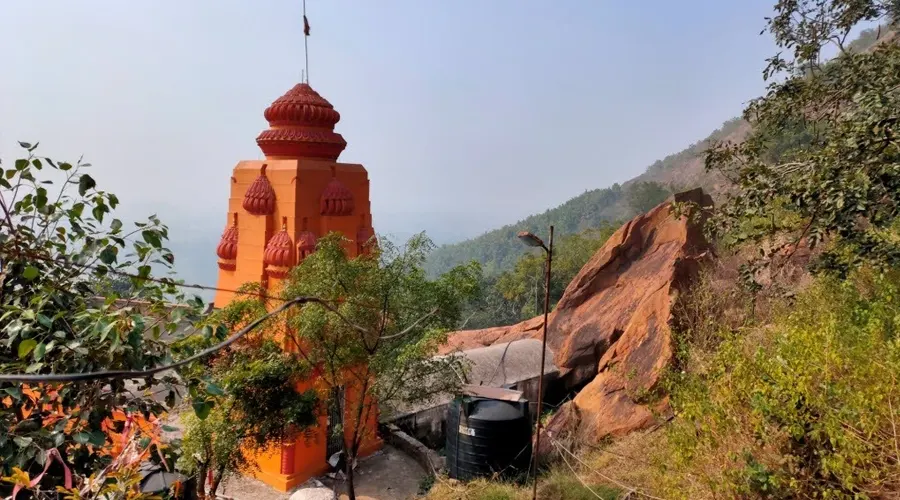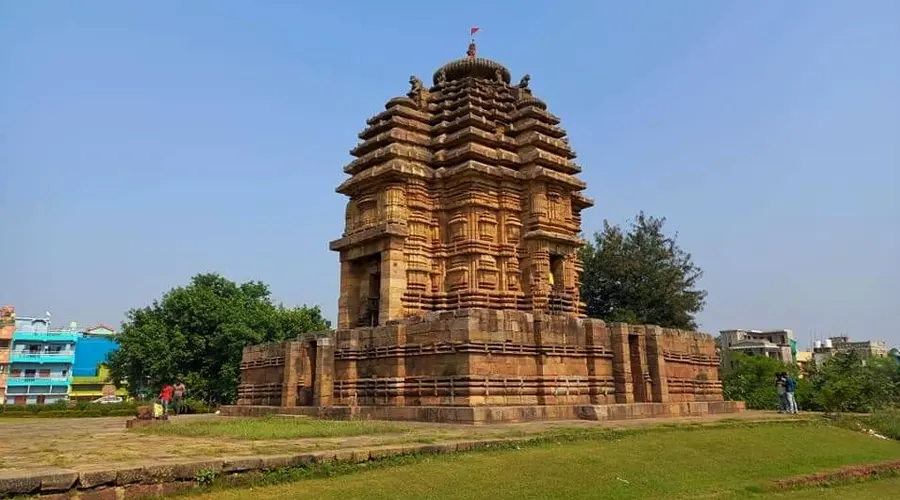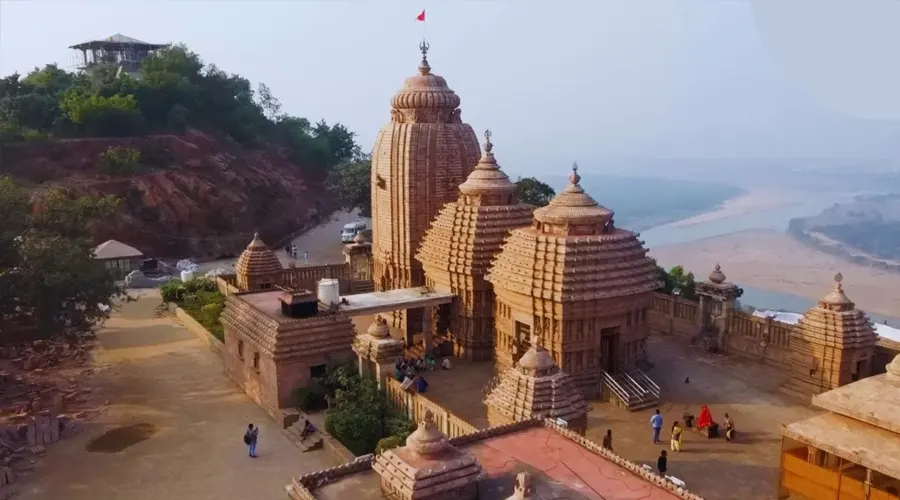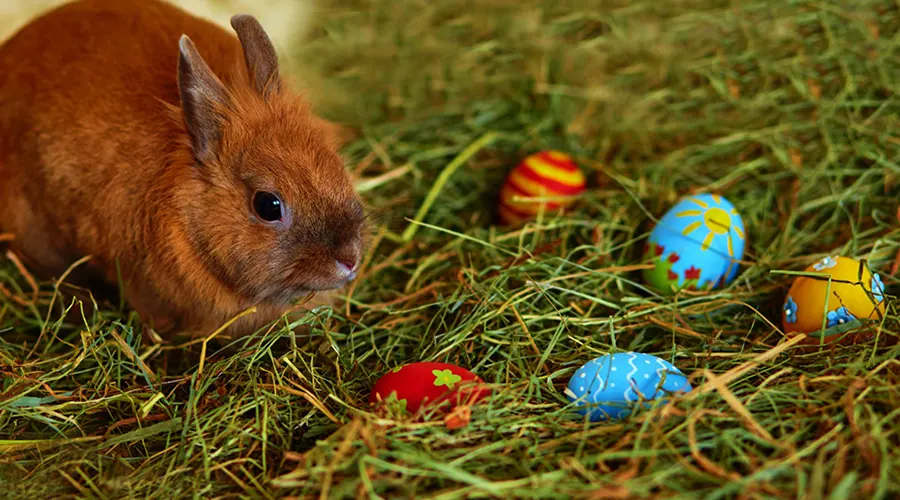Udayagiri And Khandagiri Caves
Also known as Cuttack caves, Khandagiri Caves are artificial caves located in the state of Orissa which dates back to the 2nd century. This place is quite a sight to see with all the beautifully carved inscriptions and figures. This place holds great historical significance. A large number of ancient temples with intricate carvings surround this place which has its significance. If you want to relax and spend some quiet time amidst nature, several lush green parks are also located around Khandagiri Caves.
It is believed that the Khandagiri caves were dug during the rule of the great emperor of the Mahameghavahana Dynasty, King Kharavela. These caves are believed to be built by Jain and Buddhist monks who used these caves as a place to pray and meditate.
Apart from temples and historical sites, this place is also replete with flora and fauna. Animals such as elephants, wild boars, hyenas, panthers, jackals, foxes, and bears can be seen. This place is also home to colorful birds including peacocks, Indian Cuckoo, Kingfisher, and Indian treepie. Snakes and lizards are also common inhabitants of this place.
History of Khandagiri Caves
Previously known as Cuttack or Kattaka Caves, the Udayagiri and Khandagiri caves were discovered in the 19th Century by Andrew Sterling, a young British officer. It is said that Jain monks led a nomadic life and traveled from one place to another. During one of their sojourns in Odisha during the monsoons, King Kharavela decided to build a place for them, where they could rest and meditate. As commissioned by him, these cave shelters were carved out in the hills for the monks.
Each of the caves received water in the form of a small canal through a source; each had holes for easy communication, a place to burn the lamps, and a floor that was slightly tilted to serve as a headrest. Many of these caves had an upper chamber, where it is believed that the monks went into profound meditation.
As per the Jain tradition, it is believed that there was a time when Mahavira Jain, who was the 24th Tirthankara (spiritual teacher) of Jainism, came to the Kumari Mountain and preached his doctrines. Ever since this place has been sacred for the followers of Jainism.
Architecture of Khandagiri Caves
These caves greatly reflect the Jain monks’ simplicity, which is evident from the fact that these caverns have low ceilings, pointing out that the only posture that was possible in them was the bowed down posture. Additionally, the lack of decoration in them further highlights it. These caves have sculptures only related to deities, religious observances, and historical episodes.
The architecture and intricate sculptures on the walls of these caves depict several stories from mythology and history. It is noteworthy that these were carved by hand using simple, basic tools. The twin caves of Udayagiri and Khandagiri have their unique specialties when it comes to architecture.
Udayagiri Caves
The most significant cave in the Udayagiri Hills is Cave 1 - Rani Gumpha (Queen Cave). It has a double-storey structure, with each storey featuring a central wing and three other wings; the central one being bigger. There are four cells in the central wing and a space that connects the left and right wing. In the central wing, there is a striking depiction of animals, human trees, women playing musical instruments, and much more on the walls.
On the lower storey, the right-wing has three entrances with pillared galleries (verandahs) while its entrance wall features carvings of royal scenes, animals, and toranas (arched gateways). Most cells in this cave feature carved images of Dwara Palas (gatekeepers) while the toranas depict Jain religious symbols such as lotus and snakes.
Cave 2 on this hill is called Bajaghara Gumpha. It has a small size and the most noticeable thing to witness in the cave is its rectangular-shaped pillars. Cave 3 is known as Chhota Hathi (Small Elephant) Gumpha. There are six figures of small elephants along with a statue of a guardian in this cavern.
Cave 4 is called Alakapuri Gumpha. Inside it, there is a stunning sculpture of a ferocious lion, which is holding its prey in his mouth. Cave 5 is known as Jaya Vijaya Gumpha while Cave 7 is called Thakurani Gumpha. Both these caves have a double-storey structure featuring beautiful carvings and paintings of animals on their walls.
Caves 6 and 8 are identified as Panasa Gumpha and Pataliputra Gumpha. Cave 9 is called Swargapuri and Mancapuri Gumpha. This double-storey cave features depictions of two female and two male figures worshiping the Kalinga Jina (Lord Jagannath).
Cave 10 is Ganesha Gumpha, and it has been named so because there is an image of Lord Ganesha on the back portion of its right cell. This cavern also features a figure of a Jain Tirthankara in a worshiping position. Besides these, there are carved sculptures of Dwara Palas and elephants in the cave.
Among caves 11 to 18, the most important one is Cave 14 – Hathi Gumpha (Elephant Cave). This is a natural cavern featuring inscriptions about the reign of King Kharavela and his glories. Inscriptions including the sacred Namokar Mantra of the Jains are also found in Hathi Gumpha.
Caves 11, 12, and 13 are known as Jambeshvara Gumpha, Vyagraha Gumpha, and Sarpa Gumpha while caves 15, 16, 17, and 18 have been named Dhanagarha Gumpha, Haridasa Gumpha, Jagannath Gumpha and Rasui Gumpha.
Khandagiri Caves
Caves 1 and 2 are called Tatowa Gumpha. Both of them feature figures of two dwara palas at the entrance, along with figures of two lions and two bulls. Images of parrots can also be witnessed just above the arch of the cave.
Caves 3 to 6 are known as Ananta Gumpha, Tentuli Gumpha, Khandagiri Gumpha, and Dhyana Gumpha. Cave 7 is called Navamuni Gumpha, which features wonderful sculptures of Sasana Devis and the nine Tirthankaras of Jainism. It is believed that these sculptures were carved in the 11th Century, during the reign of the Somavamshi Dynasty in Kalinga.
Cave 8, which has images of 25 Jain Tirthankaras on the walls of its cells, is called Bharabhuji Gumpha. Trusula Gumpha, Ambhika Gumpha, and Lalatendu Keshari Gumpha have been numbered as caves 9, 10, and 11. No names have been given to caves 12, 13 and 15.
Cave 14, which is called Ekadashi Gumpha, is named after two serpents, images of whom have been carved on the cave entrance. On its wall, striking figures of athletes, children, women, bulls, lions, and other animals have been depicted.
Inscriptions at Khandagiri and Udayagiri caves
There are several inscriptions on the walls of these two twin caves, with the one considered to be the most important being the Hathi Gumpha inscriptions, which are believed to have been carved during the 2nd Century at the orders of King Kharavela. Other important inscriptions besides this are found in the caves of Mancapuri and Sarpa Gumpha.
These inscriptions narrate King Kharavela’s love story with his second wife while one another depicts the conversation the king had with another famous historical figure, Alexander the Great. It is greatly believed that the contents of the inscriptions of Hathi Gumpha are true records of King Kharavela’s reign, as these contain symbols of the Jainism religion that have truth as its core value.
This is further proved by the fact that the inscriptions begin with the salutation to the Arihantas (victors) and the Siddhas (pure souls). Hence, it is said that a king like he was; someone who had a deep faith in religion, could not have mentioned anything but the real truth.
The inscriptions depict several historical events from the reign of King Kharavela in chronological order. One of the most interesting inscriptions found in these caves is that of the infamous Kalinga War, which has been deeply etched in the history of Odisha. These inscriptions not only talk about the political episodes but also about the social, cultural, and religious conditions prevailing in that period.
The language of the inscriptions is Brahmi, which is quite similar to the Pali language. The written style is Kavya (poetic). The inscriptions found in the famous Hathi Gumpha present Kharavela as a great king, conqueror, champion of culture, and patron of Jainism.




